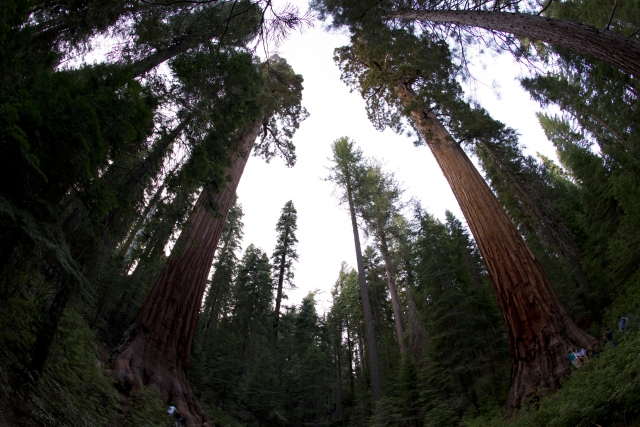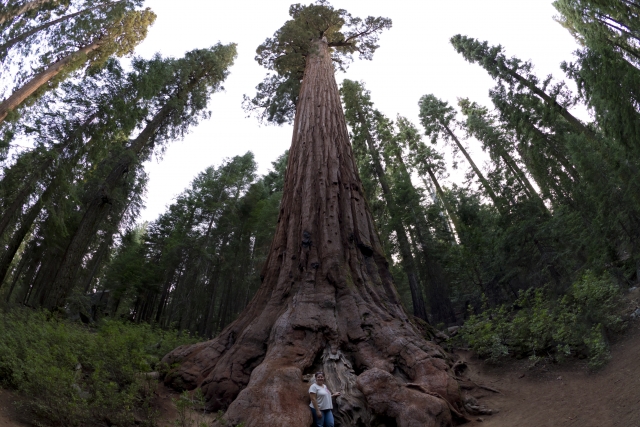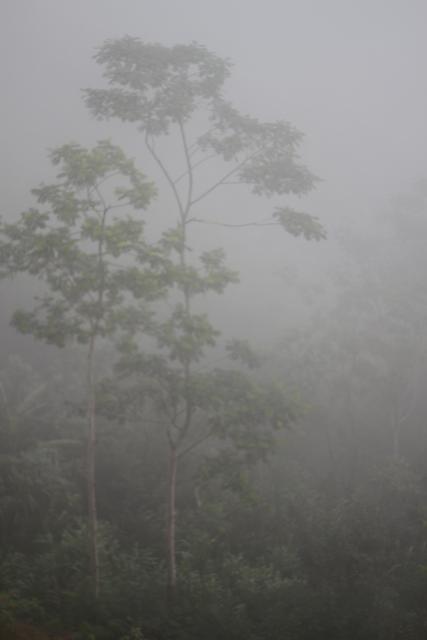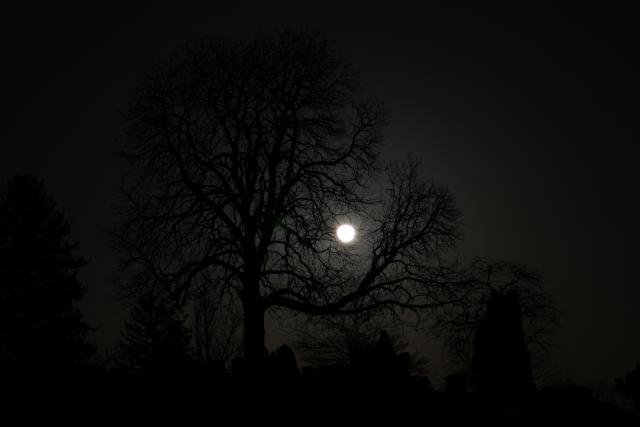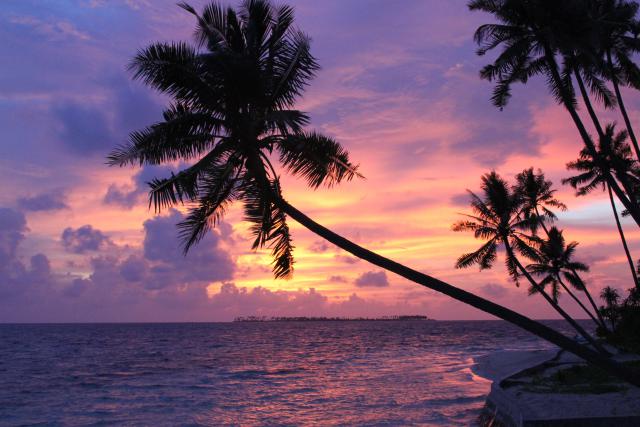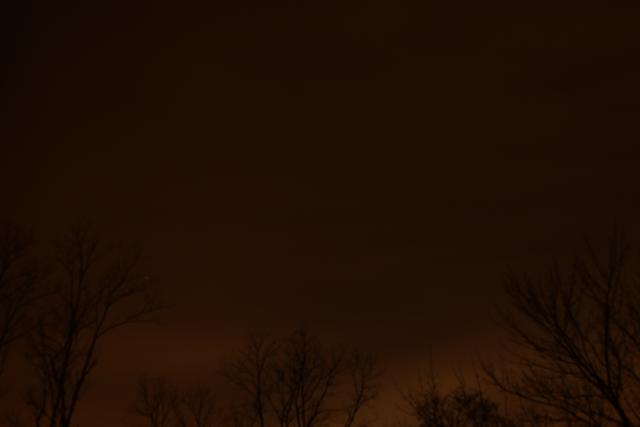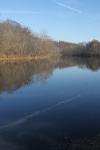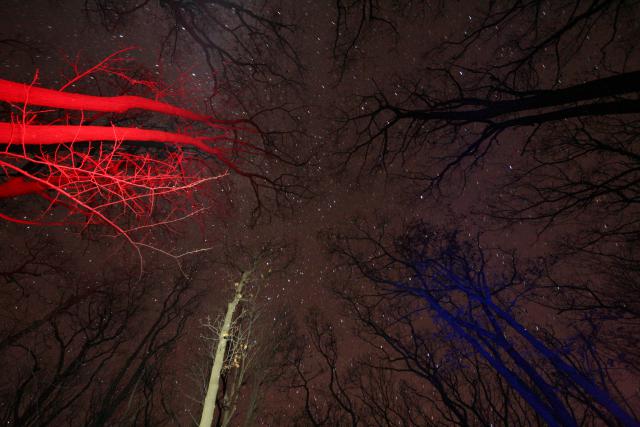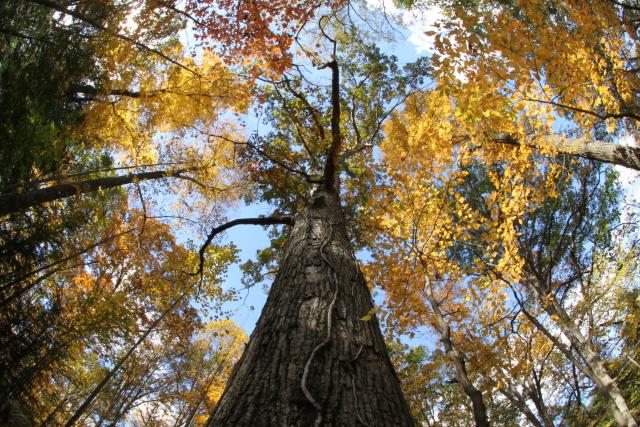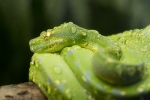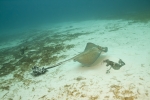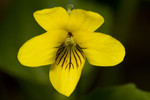trees
California Trip: Sequoias
ktuli — Tue, 09/11/2012 - 19:20
Just inside the south entrance to Yosemite National Park is the Mariposa Grove of Giant Sequoias. As we have seen before, photographing trees - especially massively large ones - can be quite challenging, but you just can't pass up an opportunity to shoot such incredibly impressive organisms.
Technical Data: Canon EOS 7D, Sigma 10mm f/2.8 EX DC HSM Fisheye (borrowed), 1/40 sec at f/5.6. ISO 800. Raw processing in Adobe Camera Raw.
Normally, I try to eliminate random other people from my photos, but in this case, it helps to serve as a point of reference to show just how huge these trees are.
Technical Data: Canon EOS 7D, Sigma 10mm f/2.8 EX DC HSM Fisheye (borrowed), 1/20 sec at f/5.6. ISO 800. Raw processing in Adobe Camera Raw.
In both of the above shots, I used a friend's fisheye lens to help me get the entire tree in the shot - here in the second shot, Anya provided a lovely model to provide the point of reference. The natural distortion of the fisheye lens certainly creates a distinct view, and to some extent, it actually hides the immensity of the trees.
Technical Data: Canon EOS 7D, Sigma 10-20mm f/4-5.6 EX DC HSM AF at 10mm, 1/60 sec at f/5.6. ISO 800. Raw processing in Adobe Camera Raw.
We even got a shot with the two of us... and yes, if you're wondering - sequoias make me feel short.
- Bill
PS: As an additional trivia note, Sequoia is one of the shortest English words that contains all five vowels!
Poll: St. Kitts Saman Tree Compositions
ktuli — Sat, 12/03/2011 - 20:38
When we go on dive trips, our group always makes sure to spend some time top-side exploring the exotic places that we visit. In St. Kitts, we visited a batik factory (yes, like the one we visited in Bali) located on the grounds of Romney Manor that was once owned by the great great great grandfather of Thomas Jefferson.
On the grounds is a Saman Tree (Albizia saman). This tree is absolutely incredible... it is over 350 years old, 24 feet across at the base of the trunk, and the branches span over half an acre.
So obviously, it presented some challenges for getting a good composition that worked well to capture it. In all honesty, I should have put Anya in the frame near the base of the tree as a point of reference. Additionally, the late afternoon (almost 4PM) tropical light certainly presented some exposure issues (between a bright sky and dark branches and shared area under the tree).
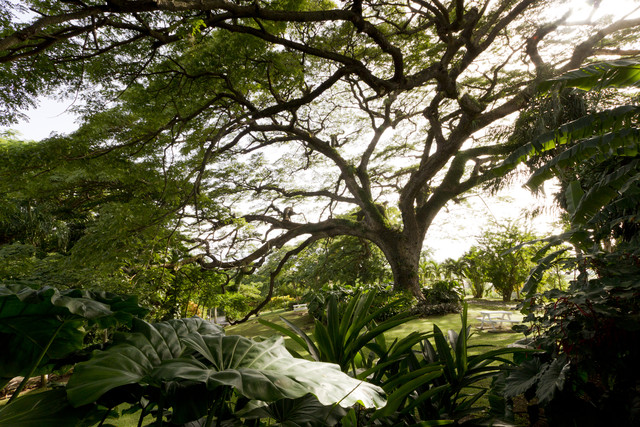 |
|
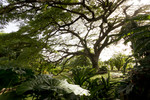 Wider Composition, 1/120 sec at f/11 |
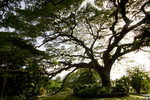 Tighter Composition, 1/200 sec at f/11 |
Technical Data: Canon EOS 7D, Sigma 10-20mm f/4-5.6 EX DC HSM AF at 10mm, 1/120 and 1/200 sec respectively at f/11. ISO 400. Raw conversion in Photoshop CS5. Romney Manor, St. Kitts.
Usual drill here - mouse over the thumbnails for the larger view, then place your vote and leave a comment letting me know why you chose what you did.
- Bill
Pink Dogwood Blossoms
ktuli — Fri, 05/27/2011 - 18:08
Ok - as promised, here is the calm flower photo to make up for yesterday's spider shots...
Technical Data: Canon EOS 7D, Canon EF 100mm f/2.8L Macro IS USM, 1/250 sec at f/2.8. Canon Speedlight 580EX II flash in auto mode and wireless control. Image Stabilization on. ISO 400. RAW processing in Adobe Camera Raw.
I took several different exposures of this shot, but I really like the almost dreamy feel that this one has because of the extremely wide aperture (f/2.8). Drop me a comment and let me know what you think.
- Bill
Bali: Trees in the Clouds
ktuli — Sat, 04/02/2011 - 20:31
It was the rainy season while we were in Bali, and as such, it rained at least once every day.
In particular, on our second day there, we made a trip up to see one of the major volcanoes on the island (sorry - I can't remember the name). We seemed to have good luck with the rain only hitting overnight or while we were in the van driving to/from our destinations.
However, in this particular case, the rain produces a large amount of mist/fog that just blanketed the whole area. We had driven up a neighboring peak so that we could enjoy a lunch with a scenic vista of the volcano right across thre way, but were presented with nothing but a featureless white cloud.
As we finished eating, I watched the fog shift and pulse as it started to lift slightly. We spent a while on the overlook catching glimpses of the volcano. At one point, these trees appeared through the fog. I instantly thought it looked like something I would see in a National Geographic magazine or a BBC Wildlife special.
I quickly composed the shot, and fired off one frame, and just as quickly as they appeared, the trees were gone.
Technical Data: Canon EOS 7D, Canon EF 50mm f/1.8 II, 1/660th sec at f/1.8, ISO 100 (auto). No post production
- Bill
Tree Framed Full Moon
ktuli — Thu, 03/31/2011 - 19:33
Here's another shot from the perigee full moon from a couple weeks ago. After taking the shots or the moonrise up on Mount Washington, we stopped off at a nearby cemetery to see what kind of shots we could find there. It was really cold that night, so I rattled off a couple quick shots and then headed back home for some hot cocoa.
Technical Data: Canon EOS 7D, Canon EF-S 18-55mm f/3.5-5.6 II at 55mm, 2.6 sec at f/5.7. ISO 200. No post production.
Why This Photo: With the large full moon, Anya suggested some spooky shots in the cemetery. Once I saw this tree with that distinct low limb, I decided to frame the moon in the middle of the branches.
What Works: The dark exposure adds to the spooky feel of the scene, and the branches of the tree wrapping the moon completes that sense.
What Doesn't Work: The moon is a bit over-exposed and becomes a harsh featureless spot instead of an ominous moon. The composition is lacking a bit - the evergreen bush on the left is pretty unbalanced, and the moon is a bit too close to center. Perhaps some post production cropping could help the cause.
Thanks for stopping by today.
- Bill
Wakatobi: Sunsets
ktuli — Wed, 03/02/2011 - 21:41
I've been having some motivation issues with getting new posts written, so today I'm just dropping by to post a couple nice sunset photos. Enjoy.
Technical Data: Canon EOS 7D, Canon EF-S 18-55mm f/3.5-5.6 II at 18mm, 1/32 sec at f/8. ISO 320. No post production.
Technical Data: Canon EOS 7D, Canon EF-S 18-55mm f/3.5-5.6 II at 28mm, 1/32 sec at f/11.3. ISO 3200. No post production.
Hopefully I get my motivation back soon and can get back to posting regularly.
- Bill
BG-E7 Battery Grip & Satechi TR-A Timer Remote Control
ktuli — Tue, 12/21/2010 - 21:07
Alright, as promised, I will get to some of the product reviews I've mentioned a few times already. Sorry though, I'm not ready to do my review of the Canon EF 100mm f/2.8L Macro IS USM just yet. So instead, we'll look at the Canon BG-E7 Battery Grip and the Satechi TR-A Timer Remote Control.
 This is actually a little funny... on one hand, I was nervous and apprehensive about buying a non-Canon battery grip (there are plenty of third party options that sell for much cheaper), yet I did end up with a non-Canon timer remote. In both cases, the third party products were roughly half the price, but there was just something about the battery grip, with it being so integrally involved in the power system of the camera that I just couldn't bring myself to trust a non-Canon product. This is something you'll have to debate for yourself I guess.
This is actually a little funny... on one hand, I was nervous and apprehensive about buying a non-Canon battery grip (there are plenty of third party options that sell for much cheaper), yet I did end up with a non-Canon timer remote. In both cases, the third party products were roughly half the price, but there was just something about the battery grip, with it being so integrally involved in the power system of the camera that I just couldn't bring myself to trust a non-Canon product. This is something you'll have to debate for yourself I guess.
Canon BG-E7 Pros: Obviously, you buy this if you want to double your shooting time, and this obviously does that with no question. The connection to the camera is very snug and sturdy (I've seen others - usually third party products - that are a little wobbly), and all functionality is maintained at both shutter triggers with the additional scroll wheel and other buttons. Additionally, once I recover a little camera budget, I'll be able to go pick up the Canon Hand Strap E1 which only works with the battery grip attached.
Canon BG-E7 Cons: Aside from the price, my biggest gripe with this grip is the fact that the button feels different than the main shutter button. Why not make them feel identical in your hand? My hand has gotten used to 7D's button placement, why would a Canon product not replicate that identically? Also, like other third party grips, it has a separate on/off switch to activate/deactivate the additional buttons - why not use the camera's orientation to do that? The camera can automatically rotate my photos based on camera orientation, why not this?
The grip adds a good deal of weight to the camera too, but I'm not going to complain about that - I knew it would before buying it. And except for the feel in my hand, the cons are pretty minor - if you have a need for a longer battery life, it is worth it (just make sure you have plenty of battery packs to fill it - it doesn't come with any extras).
The photo above was from my attempt to capture the recent total lunar eclipse for a timelapse video. Unfortunately, I was unable to properly predict where the moon's path would take it, so the best I got was some orange clouds. However, the exercise was worthwhile to practice the use of anintervalometer.
 I purchased this Satechi TR-A Timer Remote Control back in May, and haven't really done much to use it to its fullest potential. Before this, I had just been using it as a remote shutter release (very very handy for detailed macro and long exposure work).
I purchased this Satechi TR-A Timer Remote Control back in May, and haven't really done much to use it to its fullest potential. Before this, I had just been using it as a remote shutter release (very very handy for detailed macro and long exposure work).
But this remote also has the timer function that is very powerful. I can set any combination of the following:
o Delay before starting exposures
o Bulb exposure time (useful for exposures over 30 seconds)
o Interval between exposures
o Number of exposures (including infinity or basically until the battery runs out on something)
o Audible countdown beep warning (for the last 3 seconds before exposure)
So for example, last night, I set the timer around 10:30PM. I set a 1.5 hour delay at the beginning so my exposures wouldn't start till midnight. Then I had the remote do 30 second exposures every 2 minutes, set to infinity so I manually stopped the cycle in the morning when I woke up. Had I properly pointed my camera, I would have had 210 exposures of the night's lunar eclipse. Instead, I got 210 exposures of clouds.
Satechi TR-A Pros: Obviously, the price is much nicer than Canon's TC-80N3 ($60 versus $150), and from what I have read it does every feature that the Canon trigger does. The interface is simple to use, and as long as you slow down and think about what you actually want to do, is very easy to setup (I read multiple reviews of people getting confused with the setup, but I think they just were getting confused and didn't understand the manual's instructions). Lastly, the trigger works perfectly as a wired remote without needing to have batteries installed - great for saving battery life and not keeping the batteries installed in the unit!
Satechi TR-A Cons: Honestly, I read every single review of this product I could before committing to buying it, and I can only agree with a couple of the cons people found with this product. First, the backlight really does turn off far too quickly. It would be nice if the backlight had a lock-on function to make programming the remote in the dark much easier. Also, there is a red light that flashes while the camera is making an exposure - honestly, I see two things wrong with this: (1) it uses battery life and (2) depending on where you set the remote, could get picked up in your exposure. I like the option to have the flashing light, but give me the option to turn it off too.
All in all, again, we're looking at very minor cons that are far outweighed by the pros of these products. Both products are items that you might normally overlook as valuable to your photography, but once you have them, I think you really see the value in them.
I can't stress enough the value of the remote shutter release - and I'll argue the debate with anyone who wants to claim that a timer delay function on the camera is good enough. I know the battery grip is more of a luxury item, but a remote shutter release really should be part of every serious photographer's kit (whether it is a intervalometer model or not).
Well, I hope you enjoyed the double product review today, I know it got a little long, but they linked together for this recent project (even if I didn't get my eclipse timelapse like I wanted!) so I thought it worked well to review both together.
Stay tuned. I still owe you folks the lens review, and I know folks are waiting for the Christmas TTV (you didn't think I'd pass up a chance to get some more TTV in, did you?).
- Bill
Poll: Top Third or Bottom Third
ktuli — Sun, 11/21/2010 - 19:32
I usually don't do polls so close together, but I wanted to share these and gather opinions on whether folks liked more water or more sky.
I know I've mentioned it repeatedly in my critiques of shots, but I don't know if I've specified what exactly is mean when I refer to 'the thirds'. Imagine drawing a tic-tac-toe grid on your photo (or in your viewfinder when composing your shot). One thing to look at is whether any lines work well along one of those grid lines - an easy one is your horizon in landscape photography like this. Another way to look at those grid lines is where they intersect - placing one of your main focal elements at that point is generally considered. This is usually referred to as the Rule of Thirds even though it is more of a suggestion than a rule.
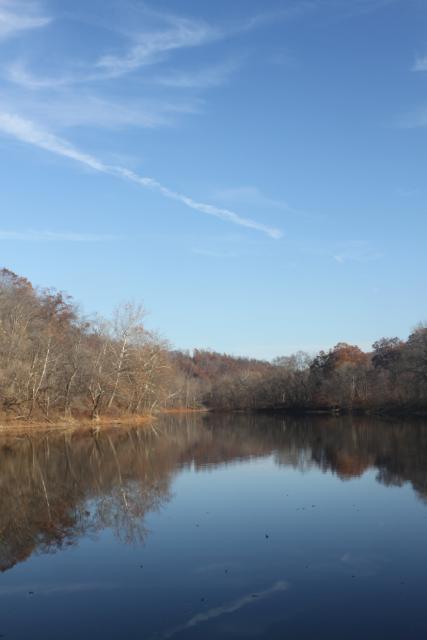 |
||
Both Photos Technical Data: Canon EOS 7D, Tokina AT-X M35 Pro DX AF 35mm f/2.8 Macro 1:1, 1/12 sec at f/22.6. ISO 200. Circular polarizing filter. No post production. Cedar Creek Park, Westmoreland County, PA.
I know these shots are not 100% identical left-to-right as I think I had to sidestep some low hanging tree branches to get the bottom third image, but I think it serves to show the difference between the placement of the horizon (or in this case the water level) on the top or bottom third.
You know the drill - place your vote, then leave me a comment to let me know what made you vote the way you did.
- Bill
More Light Painting
ktuli — Tue, 11/09/2010 - 19:06
All that beautiful night photography in those time-lapse videos had me thinking about this old set of photos. So far, I've shared the award winning black and white stars and trees as well as the light painted adirondack.
I am usually impressed by night photography, and quite often enjoy looking at the Astronomy Picture of the Day (APOD) when they share night photography.
Anyway, this one combined night photography and light painting...
Technical Data: Canon EOS Digital Rebel XT, Sigma 10-20mm f/4-5.6 EX DC HSM AF at 10mm, Unknown manual exposure length as f/5.6, ISO 1600. Laurel Highlands Hiking Trail.
Hopefully these multiple motivations will get me out there to capture some new night photos and maybe some more light painting.
- Bill
Fisheye view of a Tree
ktuli — Sat, 10/23/2010 - 20:12
Last weekend, my friend, Tom loaned me his Sigma 10mm Fisheye lens. So we decided to take a trip out to Ohiopyle.
I have always found trees to be very intriguing - yet almost impossible - subjects. There is just something about photographing trees that I struggle with, but I keep trying. In fact, I have some specifically tree photo projects simmering on the back burner, so hopefully some day they'll see the light of day and I can share them here.
In the meantime, let's look at this tree through a fisheye lens...
Technical Data Canon EOS 7D, Sigma 10mm f/2.8 EX DC HSM Fisheye (borrowed), 1/12 sec at f/22.6. ISO 200. No post production. Ohiopyle, Fayette County, PA.
Why This Photo: As I said, I am intrigued by photography of trees, and I like this perspective giving the full feeling of the size of the tree. Also, using the fisheye lens, gives a very interesting perspective with the surrounding trees. When I saw this tree off the side of the trail, I knew it was worth trying to shoot.
What Works: Despite ignoring the rule of thirds and placing the trunk of the tree dead center, I like this layout composition. Also, though the distortion of the fisheye is constant in the frame, the placement of the surrounding trees actually does a good job of making it appear offset slightly to the top of the frame.
What Doesn't Work: The lighting was tough with fairly quick moving clouds shifting the brightness of the scene repeatedly and with little warning - thus the frame is not evenly lit and the colors are not as nice as they could be. Also, I wish there was more variety in the colors in the leaves, but then again, I guess I don't get much control over that.
Unfortunately, I had another shot I really wanted to get on this trip with this lens. I don't want to give away the details because I have a whole project I want to try and start up that is related, so I'm going to be a little vague here. But there is what I would call an iconic subject out on Route 51 that I wanted to photograph only to find it was covered with some very offensive graffiti. I knew there was graffiti, and that was part of the attraction to it - I was hoping that it would help to make the photo more engaging, so you can imagine my disappointment. I am still hopeful to eventually figure out a way to get the photo I planned without the offensive elements, and then I'll have to borrow that fisheye lens again.
- Bill

